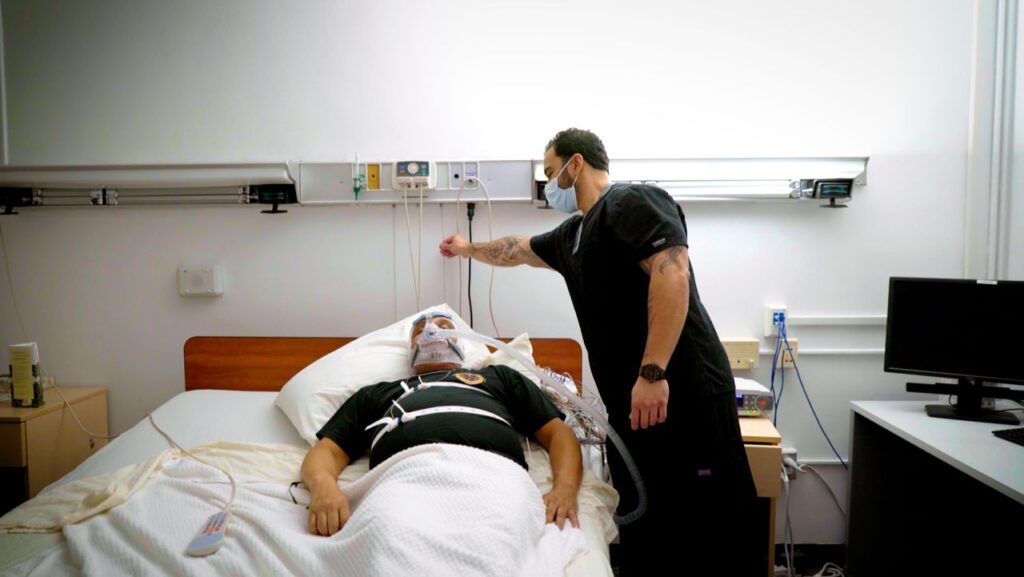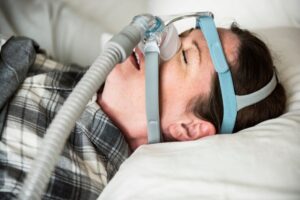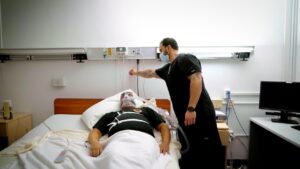
Sleep testing is an important diagnostic tool used to evaluate and diagnose sleep disorders. If you have been referred for a sleep test, understanding what to expect and how to prepare can help ease any anxiety and ensure a smooth experience. In this comprehensive guide, we will walk you through the various aspects of sleep testing, from its importance to the different types of sleep tests available. We will also delve into the preparation process, what to expect during the sleep test itself, and how to interpret your sleep test results. So let’s dive in and explore the world of sleep testing!
Understanding Sleep Testing
The Importance of Sleep Testing
Sleep is an essential part of our lives, contributing to our overall well-being and functioning. However, many individuals struggle with various sleep disorders that can have a significant impact on their quality of life. Sleep testing plays a crucial role in diagnosing these disorders and guiding appropriate treatment interventions. By undergoing a sleep test, healthcare providers can gather valuable information about your sleep patterns, breathing, and brain activity, helping them identify any abnormalities or underlying sleep disorders.
During a sleep test, you may be asked to spend a night at a sleep center or use a portable device at home to monitor your sleep. This non-invasive procedure allows healthcare professionals to observe your sleep in a controlled environment, ensuring accurate and comprehensive data collection. The information gathered from the sleep test is then analyzed by sleep specialists who can provide insights into your sleep quality and identify any potential issues that may be affecting your sleep.
Different Types of Sleep Tests
There are different types of sleep tests available, depending on the specific sleep-related issue being assessed. Two commonly used sleep tests include polysomnography (PSG) and multiple sleep latency testing (MSLT). PSG involves monitoring various physiological parameters during sleep, such as brain waves, eye movements, heart rate, and muscle activity. This comprehensive test provides a detailed picture of your sleep architecture and can help diagnose conditions like sleep apnea, narcolepsy, and restless legs syndrome.
On the other hand, MSLT focuses on evaluating excessive daytime sleepiness. This test measures how quickly you fall asleep during daytime naps and assesses your ability to enter rapid eye movement (REM) sleep. It is particularly useful in diagnosing conditions like narcolepsy, where individuals experience uncontrollable sleep attacks during the day.

Who Needs a Sleep Test?
Sleep testing may be recommended for individuals who exhibit symptoms of a sleep disorder, such as chronic snoring, excessive daytime sleepiness, insomnia, or pauses in breathing during sleep (sleep apnea). Furthermore, individuals with certain risk factors, such as obesity or a family history of sleep disorders, may also be advised to undergo a sleep test to assess their sleep health.
It is important to note that sleep disorders can have far-reaching consequences beyond just feeling tired during the day. Untreated sleep disorders can increase the risk of developing chronic conditions like heart disease, diabetes, and depression. Therefore, if you suspect that you may have a sleep disorder or have been experiencing symptoms that disrupt your sleep, it is crucial to consult with a healthcare professional who can recommend the appropriate sleep test and guide you towards effective treatment options.
Preparing for Your Sleep Test
Scheduling Your Sleep Test
Once your healthcare provider has determined that a sleep test is necessary, the next step is to schedule the test. This involves contacting a sleep center or hospital that specializes in sleep testing and booking an appointment. It is important to follow any specific instructions provided by the sleep center regarding the time of arrival and any preparations you need to make before the test.
When scheduling your sleep test, it’s essential to consider factors such as your work schedule and other commitments to ensure you can dedicate the necessary time for the test. Some sleep centers may offer flexible appointment times to accommodate different schedules, so be sure to inquire about options that best suit your needs.
What to Bring to Your Sleep Test
Before heading to the sleep center, make sure to gather all the essential items you will need during your sleep test. These may include comfortable sleepwear, toiletries, any prescribed medications you regularly take, and your insurance information. It can be helpful to pack a small bag with these items to ensure you have everything you need for a comfortable stay at the sleep center.
Consider bringing items that help you relax and unwind before bedtime, such as a favorite book or soothing music. Creating a familiar and calming environment can aid in achieving better sleep quality during the test, leading to more accurate results that can assist in diagnosing any potential sleep disorders.
Dietary and Lifestyle Considerations
In the days leading up to your sleep test, it is important to make certain dietary and lifestyle considerations. Avoid consuming caffeine or alcohol, as these substances can interfere with your sleep patterns. Additionally, try to maintain your regular sleep schedule and avoid napping on the day of the test. By following these guidelines, you can optimize the accuracy of the sleep test results. Find more about caffeine on https://www.ncbi.nlm.nih.gov/books/NBK519490/
Engaging in light physical activity during the day before your sleep test can help promote better sleep at night. Exercise has been shown to improve sleep quality and can contribute to more restful sleep during the test. However, it is advisable to avoid vigorous exercise close to bedtime, as this may have the opposite effect and disrupt your ability to fall asleep easily.
What to Expect During the Sleep Test
The Sleep Test Environment
When you arrive at the sleep center, you will be welcomed into a calm and comfortable environment designed to promote relaxation. The sleep room will be equipped with a comfortable bed, dim lighting, and temperature control to ensure optimal comfort during your sleep study. The sleep technologist will explain the procedures and address any questions or concerns you may have before the test begins.
The Role of the Sleep Technologist
Throughout the sleep test, a highly trained sleep technologist will monitor you closely. They will attach various sensors to your body to monitor brain activity, heart rate, eye movements, and muscle activity. These sensors are painless and non-invasive, and their purpose is to gather data that will help evaluate your sleep patterns and identify any potential sleep disorders. The sleep technologist will be available to assist you throughout the night and ensure your comfort.
Understanding the Equipment Used in Sleep Testing
During the sleep test, you will be connected to several pieces of equipment that record your physiological responses during sleep. These may include EEG (electroencephalogram) leads attached to your scalp to measure brain waves, EOG (electrooculogram) sensors near your eyes to monitor eye movements, and EMG (electromyogram) sensors on your chin and legs to measure muscle activity. The equipment used is safe and painless, and the sleep technologist will be responsible for attaching and removing the sensors.
Additionally, the sleep room will be equipped with a state-of-the-art audio system that plays soothing sounds and music to create a serene atmosphere conducive to sleep. The room will also have a small desk and chair where you can jot down any thoughts or observations you may have during the night. This allows you to document any dreams or unusual sleep experiences that may be relevant to your sleep study.
Furthermore, the sleep center takes great care in ensuring your privacy and comfort. Each sleep room is soundproofed to minimize any noise disruptions from the outside. The beddings are made from high-quality materials to provide maximum comfort, and extra pillows and blankets are available upon request. The temperature in the room can be adjusted to suit your preferences, ensuring that you are neither too hot nor too cold during the night.
Interpreting Your Sleep Test Results
Understanding Sleep Stages and Cycles
Sleep is divided into different stages, each with its own distinct characteristics. These stages include non-rapid eye movement (NREM) sleep and rapid eye movement (REM) sleep. By analyzing the data collected during your sleep test, healthcare professionals can determine the amount of time spent in each sleep stage and evaluate the quality of your sleep. This information is crucial when diagnosing sleep disorders and recommending appropriate treatment options.
Identifying Sleep Disorders
Sleep tests provide valuable information that helps healthcare providers identify common sleep disorders such as sleep apnea, narcolepsy, and insomnia. By analyzing the data collected during the sleep test, healthcare professionals can detect abnormalities in breathing patterns, brain activity, and sleep architecture, enabling them to make an accurate diagnosis. This diagnosis serves as the foundation for developing an individualized treatment plan to address your specific sleep concerns.

Next Steps After Your Sleep Test
After your sleep test, you will schedule a follow-up appointment with your healthcare provider or sleep specialist. During this appointment, the results of your sleep test will be discussed in detail, and any diagnosed sleep disorders will be explained. Your healthcare provider will work with you to develop a treatment plan tailored to your specific needs, which may include lifestyle modifications, medical interventions, or referral to a sleep specialist for further evaluation or treatment. To read more about lifestyle modifications click here.
Once you have received your sleep test results, it is natural to have questions and concerns. You may wonder what the numbers and graphs mean, and how they relate to your overall sleep health. Rest assured, your healthcare provider will guide you through the interpretation of these results, explaining each aspect in a clear and understandable manner. They will take the time to address any uncertainties or anxieties you may have, ensuring that you have a comprehensive understanding of your sleep test findings.
Furthermore, it is important to understand that sleep disorders can have a significant impact on your overall well-being. Beyond the physical consequences, such as daytime fatigue and decreased cognitive function, sleep disorders can also affect your mental and emotional health. They can contribute to mood disorders, anxiety, and even increase the risk of certain medical conditions. By identifying and addressing these sleep disorders through the sleep test results, your healthcare provider aims to improve not only your sleep quality but also your overall quality of life.
In conclusion, sleep testing plays a vital role in evaluating and diagnosing sleep disorders. By understanding what to expect and how to prepare for a sleep test, you can ensure a smooth and informative experience. Remember to follow any instructions provided by the sleep center, pack essential items for your stay, and make necessary dietary and lifestyle adjustments. As you undergo the sleep test, the sleep technologist will monitor your responses using non-invasive equipment, and skilled healthcare professionals will interpret the findings to identify any sleep disorders. With the results in hand, your healthcare provider will guide you through the next steps, helping you achieve better sleep and improved well-being.
Learn more about sleep study at: Understanding the Importance of a Sleep Study for Diagnosing Sleep Apnea


